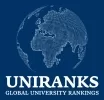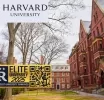When I read Dr. Sally Ashton-Hay’s timely and illuminating review, “Student Voice: Reviewing Two Decades of the Literature to Guide the Next 20 Years”, I found myself both inspired and challenged. Inspired by the clarity with which she traces the evolution of students from data points to decision-makers. Challenged, because it reveals just how much further we must go to institutionalize student agency not only in theory but across all dimensions of higher education.
At UNIRANKS, our mission is rooted in global academic visibility, and student voice is a cornerstone of academic transformation. But voice without visibility, impact, or inclusion is merely symbolic. Dr. Ashton-Hay’s review offers a foundation,but it is now time to build upon it.
Appreciation for the Foundation
Let me begin with sincere commendation. Dr. Ashton-Hay, together with her thought partners Kelly Matthews and Alison Cook-Sather, has provided a meticulous, thoughtful framework grounded in democratic values and relational learning. The updated typology moving away from students as mere “data sources” is critical. It reinforces the much-needed shift toward partnership, co-authorship, and co-creation.
The reflexive thematic analysis identifies meaningful transformations in how we conceptualize student engagement,from passive recipients to agents of change. Her advocacy for inclusive, equitable, and relational pedagogy aligns with the values we at UNIRANKS promote in our Open Ranking methodology.
But to truly shape the next 20 years of higher education, we must now turn our attention to the gaps that remain,and address them head-on.
Bridging the Gaps: A Global, Inclusive, and Impact-Oriented Agenda
1. From Local Review to Global Landscape
The JUTLP lens is insightful but narrow. Higher education is undergoing seismic shifts across the Global South, Central Asia, and Eastern Europe,yet these regions remain invisible in most student voice research.
What we must do: Use platforms like UNIRANKS to aggregate and amplify student voice data from every continent. Our ranking system already spans over 30,000 institutions. Let’s use it to capture cultural diversity in student agency and include non-Western paradigms of partnership.
2. From Practice to Measurable Impact
The reviewed literature emphasizes descriptive insight but lacks quantifiable outcomes.
What we must do: Incorporate student partnership indicators directly into university scoring models,similar to how we measure employability or research output. UNIRANKS is currently piloting impact metrics derived from co-created course outcomes and feedback loops.
3. From Voice to Voice-Tech
Dr. Ashton-Hay acknowledges the absence of AI but doesn’t explore its potential.
What we must do: Implement AI-driven sentiment analysis, predictive dashboards, and personalized learning feedback to enhance and monitor student partnership. UNIRANKS is developing AI tools to track how students co-shape their education across online platforms.
4. From Campus Governance to Civic Agency
The paper consciously excludes student representation and activism. But let’s be clear: student partnership without representation is incomplete.
What we must do: Highlight institutions where student unions co-decide on tuition policies, diversity hiring, or campus safety. These are not outliers,they are models for participative governance.
5. From Inclusion in Theory to Intersectionality in Practice
Equity isn’t just about giving students a seat at the table,it’s about who is invited and heard.
What we must do: Elevate disaggregated data. UNIRANKS is working on identity-informed scoring mechanisms to highlight institutions that support inclusive co-creation efforts at scale.
6. From Internal Collaboration to External Alignment
The review focuses solely on intra-institutional dynamics.
What we must do: Promote partnerships where student-designed programs receive external validation. At UNIRANKS, we encourage institutions to document employer-student co-design projects and link them to employability outcomes.
Conclusion: Student Voice Is Not a Trend. It’s a Mandate.
As we reflect on Dr. Ashton-Hay’s remarkable contribution, let us not forget that elevating student voice is not merely an academic exercise,it is a moral, pedagogical, and strategic imperative.
At UNIRANKS, we extend our appreciation to Dr. Ashton-Hay and the JUTLP editorial team. Their work lays the groundwork for a more inclusive, participative, and democratic higher education landscape. But to truly shape the next 20 years, we must globalize the discourse, quantify the impact, embrace digital transformation, and ensure that every student,not just the most visible,can influence the future of education.
Let us move from voice to visibility, from participation to power, and from review to reform.
Robert Love
Chairman, UNIRANKS – World’s Largest University Rankings







Add comment